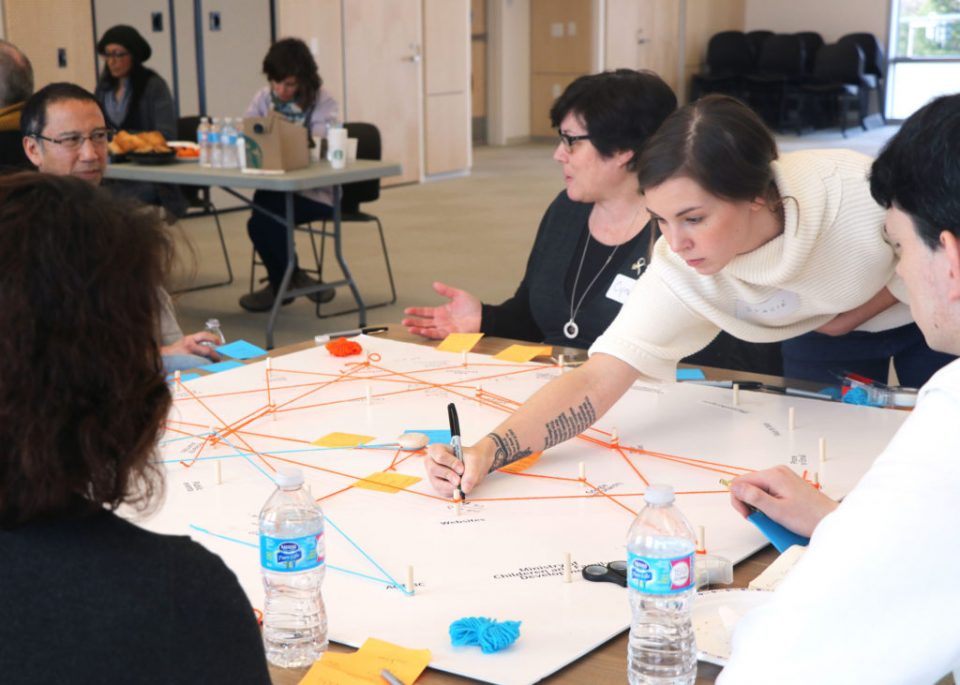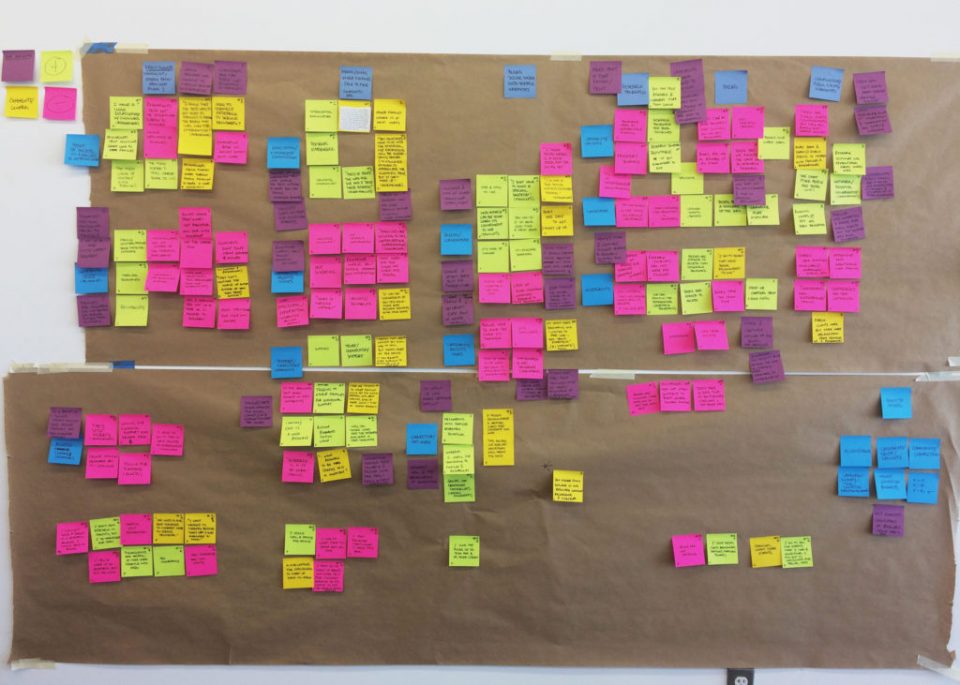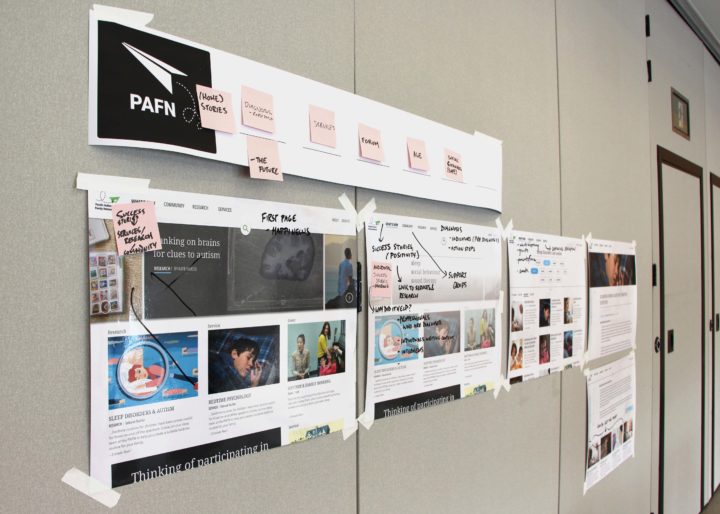Creating
connections
in autism
Service design & Research-
EMPLOYER
The Health Design Lab
ROLE
Design researcher + Lead (2017/18)
TEAM
Ateret Buchman, Zora Trocme,
Natalia Franca, Caylee Raber
The Autism community is diverse and complex, which poses a growing challenge in connecting stakeholders with emerging research.
The Health Design Lab focused on understanding this community’s needs related to research and resources.
Background
A three year journey
Year 1 – Review of family needs as they relate to research
Year 2 – Examination of research acquisition and dissemination
Year 3 – Formation of a user-centred platform
Building on this understanding of the autism community, the second year assessed gaps in how families access information and how researchers (from Simon Fraser University, the University of BC, and University of Victoria) disseminate it. Throughout these two years, co-creation sessions and workshops fostered storytelling, enhanced understanding, and identified stakeholder pain points, with the final year applying this accumulated knowledge to develop a web-platform.
Research + Co-creation
Six initial workshops were designed to promote story-telling and to shed light on the tacit knowledge held by participants.
Across six workshops in various cities throughout British Columbia, we gathered numerous stories about living with ASD, its impact on family life, and the acquisition and dissemination of research. These sessions were crucial for uncovering unique stakeholder roadblocks and pain points. Our participants, as the true experts, were integral to envisioning the future and frequently shared the most innovative solutions to bridge community gaps.




Click to enlarge

Collecting insights
Our team meticulously examined all notes and materials, ran a thematic analysis, created affinity diagrams, and drafted a comprehensive report. The recommendations presented to our client varied in scale and fidelity, ensuring a range of accessible solutions. Given Canada’s immense size and diverse provincially-run programs, along with insights from our co-creation sessions, a responsive web-platform was determined to be the most effective way to address the community’s resource and knowledge needs. Read the Health Design Lab’s report 2016/2017
Web-platform
Precedent research + Prototype
Based on our findings, exploration and initial design of a web-platform began in our final year.
In 2017, our team began developing a web-platform to connect families and community members within the ASD community with pertinent research, content, and resources. Our initial steps involved creating job stories to build user empathy, followed by a precedent review and Kano analysis. We then developed rough prototypes of the architecture, page flow, and wireframes. These materials were subsequently used for workshops and user testing sessions designed to validate our assumptions and research.
Test + validate
Community engagement is a big part of the PAFN’s mandate. The health design lab ensured that user testing echoed the collaborative activities from previous years.
Together with participants we built and edited features and functions for the proposed a web-platform. After synthesizing feedback and the notes from conversations, alterations were made to the prototypes and information architecture. I then drafted a report for the PAFN as they pursued funding from the Canadian federal government.
Sample use-case
Sample use-cases were developed to test our assumptions and research. These also proved invaluable for demonstrating the future state and possibilities of the design and features to our stakeholders and partners. For example, one use-case centered on Jacob, father to a four-year-old child with autism. Jacob needed guidance on sleep patterns and routines, as his daughter’s recent frequent night awakenings had led to significant behavioral changes. Read more about our process in our 2017/2018 Report.









